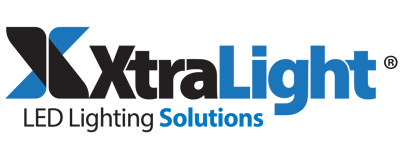COVID-19 is a small single-stranded RNA virus that is much easier to inactivate in comparison to mold or any sporicidal pathogen. UVC inactivation is based on nucleic acid complexity and size.
To learn more visit our blog Does UV Light Kill the COVID-19 Coronavirus?
It is safe to say that UVC light at a targeted 254nm wavelength will be effective at inactivating the COVID-19 coronavirus. This is based on the logic and reasoning the EPA has publicly provided for determining a microorganism's resistance to UV irradiation.
- COVID-19 Coronavirus is a positive-sense single-stranded RNA virus in the coronaviridae family
- Ultraviolet light at a targeted 254 nm wavelength will penetrate a virus's capsid and form duplicate bonds between ribonucleic acids (RNA)
- Small single-stranded RNA viruses see a median of log-4 and sometimes log-5 reductions from 254nm low-pressure lamps at a UV Dose of 30 mJ/cm2Although answers can vary from seconds to minutes, UVC inactivation depends on 4 variables:
- UVC Light Irridance (mJ/cm2)
- The distance of the UVC Fixture from the microorganism
- The pathogen's size & nucleic acid complexity
- The size of the space for disinfection
- To learn more about UV dosages for inactivation, visit our guide here.
When UV light enters a cell, it disables the cell by damaging critical nucleic acids and proteins by forming duplicate bonds called dimers. These bonds "rewrite" the genetic code of a cell rendering the organism inactive or unable to reproduce. The germicidal effects of UVC wavelengths neutralize a wide variety of pathogens.
With the use of proper Personal Protection Equipment (PPE) including skin and eye protection, UVC is safe. Without proper PPE, you can experience side effects including temporary skin redness and eye irritation. To learn more about UVC exposure and safety guidelines please click here.
Make sure you read our Operational and Maintenance Guide prior to using the system.
UVC: Eliminates Mold, viruses, and bacteria in the air & surfaces, disinfects drinking water & treatment of sewage.
UVB: Phototherapy, skin treatment, Vitamin D production, and cannabis THC potency.
UVA: Tanning, treatment of skin diseases, indoor gardening, eradicating bugs, improving air quality, and object identification.
Follow these steps for an effective disinfection process. Click on the link to our blog for details on each step
Follow the step by step instructions by clicking here
- FOLLOW SAFETY GUIDELINES
- UNDERSTAND BASIC UVC TERMS
- IDENTIFY UV DOSE
- SURVEY AREA TO BE DISINFECTED
- CALCULATE ESTIMATED UV EXPOSURE TIME FOR DISINFECTING
- DISINFECT AND VALIDATE WITH DOSIMETER CARDS
Yes, gloves should be used when installing the lamps. It helps protect the quartz tube from damage, dirt, oil, and any other debris. If the tube is damaged, the quartz will lose its filtration properties and can result in ozone emissions from your UV-C disinfection system. The lamps also contain trace amounts of mercury that can escape if the lamp glass is broken.
We have included gloves in the purchase of the UV-C Handheld and Mobile Systems.
Certain materials are susceptible to degradation if exposed to UVC for extended periods. Plastic and rubber compounds can see up to 10% reductions in shelf-life after long-term exposure to UVC.
For Example - If a plastic table had a shelf-life rating of 5 years and it was exposed to UVC the entire time, it would last 4.5 years. Colored dyes and paints can gradually lose vibrance over long periods of exposure. Plant-life may also experience damage to direct, indirect, and reflected exposure.
The blue light you see when the system is on has been added to the UVC wavelengths as an indicator that the lamp is on.
Our eyes cannot physically see UVC wavelengths. Instead, we see the remains of an inert gas that uses 10% of the consumed energy that is converted into the blue light that you see. The remaining 90% of high-power UVC light is non-visible, and you will not be able to see it working.
The only application where you can see visible changes is in mold treatments where you can see significant visible reductions in the mold during and after a UVC treatment.
Yes, we do! This chart can be displayed in any room, office, or restroom to show when UVC services have been performed.
XtraLight's UV-C systems do not create ozone because we use lamps with 254 nm.
UVC wavelengths shorter than 185nm (also known as UVV) will react with the earth's atmosphere to create ozone. UVV is known to be harmful to human lungs.
We have provided a list of websites for your reference. The research is out there - UVC is effective in inactivating pathogens.
The length of UVC disinfection effects are determined by the frequency of traffic in the effected space, the size of the space, the reflectivity of the space, and lastly the materials within the space. The more people you have visiting a disinfected space, especially in known infectious spaces, the more often you will need to perform UVC disinfections.
If you are experiencing trouble connecting the unit to WiFi:
There is an incompatibility between the new hardware of the (iPhone 11, iPhone SE, iPad Gen6, S10, S20, Note 10, and Pixel 4) and the earlier firmware version on the occupancy sensor. This issue has been addressed with a firmware update on the sensor (not an app update). However, there are numerous devices still in distribution with earlier versions of sensor’s firmware.
To resolve this issue, please use an older mobile device to run the My Leviton app. Log into your Leviton account from the older device, connect to the sensor, and update the firmware. Now you should be able to connect to the sensor from any newer device.
Please contact customer service if this does not resolve the issue.


